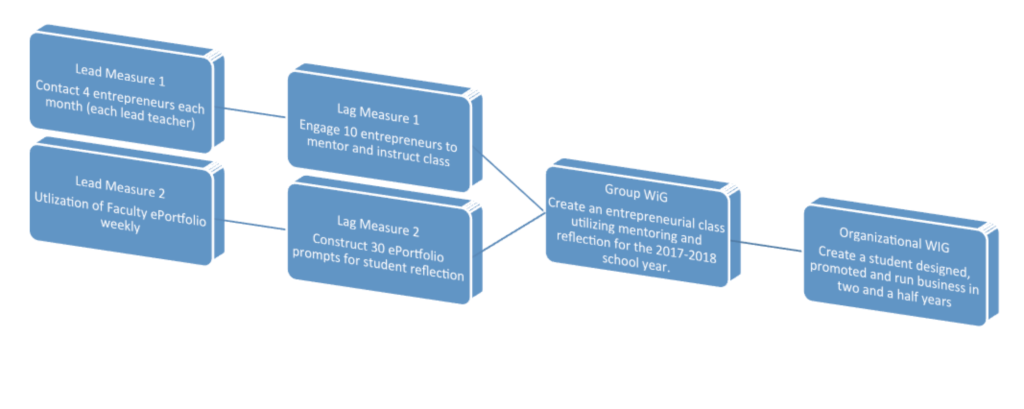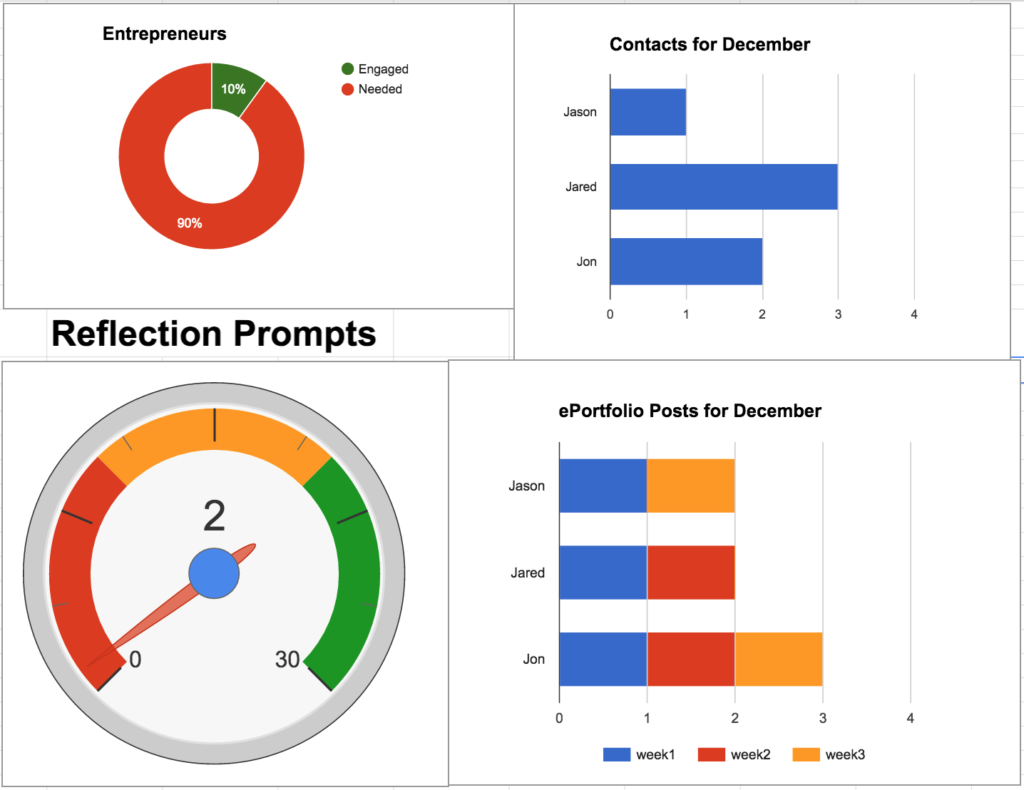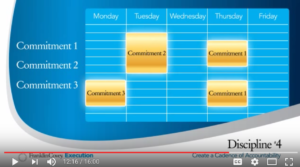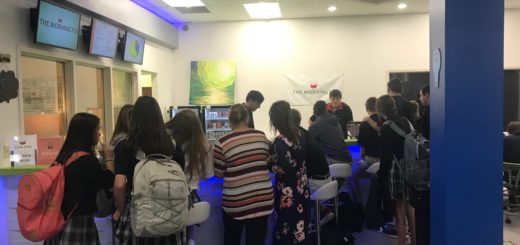4DX Book Review
I continue to plow through my reading list this year (up to 40 books total thanks to inspiration from @msstewart). Most of the time I switch between an educational or business book and a fun one. I just started The Whistler as I am a sucker for Grisham books even if they aren’t what they used to be. However, what I would like to discuss today is The 4 Disciplines of Execution: Achieving Your Wildly Important Goals. This book parallels may of the strategies discussed in Influencer, which I wrote about last week, and I can see it being valuable to our entrepreneurial initiative as well.

Example of 4DX in Entrepreneurial Initiative – This post will explain the process of getting to this point
Here is the basic structure of the theories explained in 4DX
- Focus on the wildly important (WIG)
- Focus
- Finish Line (you have to know how to win – from x to y by when)
- Act on the Lead Measures
- Influencable
- Predictive
- Have a compelling scoreboard
- Simple
- Visible
- See Lead and Lag Measure
- Quickly see whether you are winning or losing
- Accountability
- Weekly rhythm of public accountability
- Report on commitments
- Review and update the scoreboard
- Make commitments for next week
- Weekly rhythm of public accountability
As I started reading 4DX, I was thinking about how it could be used as a text for our entrepreneurial class. Then I realized while it can certainly help there it may become invaluable to the students as the plan and execute their actual business. Finally I realized I could even use this to help our group in the planning and running of the initial course. The book talks about having a top level organizational Wildly Important Goal or WIG. It says a WIG should have a well defined finish line. Then you break it down into going from “x to y in z amount of time.” As JFK said, “We will put a man on the moon and return him safely by the end of this decade!” Now that is a WIG.
So the organizational goal for our entrepreneurial program is the same as we identified in the Influencer post with a little tweak (4DX says always start with a verb) …
- Create a student designed and promoted business up in running in two and a half years
So first you need to put together a team of people to work together to identify what you can do to achieve the organizational WIG. Using the Kennedy example, the engineers building the vehicle had their own WIG, lead measures, scoreboard and accountability to define to help reach the organizational WIG of reaching the moon. For our purposes, I see this group as the 3 everyday instructors who will run our entrepreneurial initiative. They will create all the following themselves as a group since ownership is vital. This once again parallels the ideas in Influencer. However, just for fun let us go through an example to understand the principles of the book.
Discipline 1: Focus on the WIG
The first part of the book talks about focus on just one or two WIGs. It emphasizes the importance of sticking to just one or two because when we try to accomplish more in addition to the Whirlwind we actually accomplish less. It made me think of that old adage that if you have two starting quarterbacks you actually have none. Staying focused on one or two WIGs is always a struggle for me but I recognize the wisdom in this for sure. Yeah – I know I kinda just tossed the term Whirlwind in there without an explanation….
The book refers to our daily tasks at work as the Whirlwind. I think this expands into more than just work as who simply does their work only at work any more? This really hit home to me as this month has been a whirlwind. I really enjoyed this portion of the video by the book publishers that talks about blocking out a time for your WIG.
So in order for the core teaching group to help accomplish the organizational WIG they need to define their own. We will use this as the example…
Create an entrepreneurial class utilizing mentoring and reflection for the 2017-2018 school year.
So in 4DX terms this is going from 0 classes to 1 class in 10 months but I like the way mine sounds.
Discipline 2: Leading – Not Simply Lagging
The next stage the book discusses is differentiating between lag measures and lead measures. This is where there are many similarities to Influencer. 4DX focuses more on the execution than the influence but the principles are often the same, motivation and ability. As discussed when reviewing Influencer, we need to get 10 entrepreneurs to be engaged mentors and bring that ability and knowledge to our project. That is our lag measure or the short term outcome. Now how do we execute this plan so we need to develop a lead measure. A lead measure has to something that we can influence and that is predictive of success. So each person in the group needs to have discussions with at least one entrepreneur a week. This will be the lever that helps get the right people on board and engaged to move the massive boulder.
Lag Measure One – Engage 10 entrepreneurs to mentor and instruct class
Lead Measure One – Talk to at least 4 entrepreneurs a month (each lead teacher)
The second lag measure we need to achieve surrounds reflection. We need every student to be reflecting upon their learning and eventually promoting the business. In order to do that we need to construct roughly 30 prompts. I think we need our everyday instructors to be reflective themselves so they understand the value.
Lag Measure – Construct 30 ePortfolio prompts for student reflection
Lead Measure – Utilization of faculty ePortfolios weekly
Discipline 3: Scoreboard
The next step echoes the social and structural portions of the Influencer model. We need to encourage a public display of our goals to leverage the social influence (aka peer pressure) that we reinforced was so vital in last week’s post. Here is where 4DX get s a little more specific. This scoreboard needs to be simple, visible and include lead and lag measures so we can see whether we are winning. We will set the Google Sheet as the homepage on our browsers so we see it everyday as well as inside our team room. I think this example scoreboard meets the goals and easily shows whether we are winning or not.

Discipline 4: Accountability
I really fond this portion of the book very powerful and maybe where it made more sense to me than Influencer. This is where execution comes to the forefront. You can have the best plan in the world but without accountability it will not succeed. 4DX expounds that it is vital to meet weekly to establish a rhythm. It says you should stick to the same three agenda points as well.
- Report on commitments (8 minutes)
So continuing our example the group could meet every Monday at 8 in our current schedule because the teachers are suppose to arrive at 8 even though their first class doesn’t begin until 8:45. They would then report on their lead measures for the week (did they contact an entrepreneur that week) and update any commitments from entrepreneurs to their lag measure of 10 total. Keep in mind that once they reach 10 they don’t stop their contacts as the lag measure requires engaged mentors. This will include beginning to work with them on lesson plans for the class. Second they would report on whether they used their ePortfolio that week (lead measure) and if we acquired any more effective prompts for the student portfolio (lag measure).
- Review and update the scoreboard (2 minutes)
This would already be updated on the Google Sheet so everyone would see the progress. They would just verify everything is correct.
- Make commitments for next week (10 minutes)
Then obviously they would make commitments for who they would contact next week ensuring no duplication. They would also discuss whether the lead measures were properly affecting the lag measures or whether they needed to add or change anything. As the group becomes more invested they may realize better lead measures that will influence the WIG. This weekly process will ensure ideation of the whole process.
Another way to look at this is through what the book refers to as the Stages of Change.
Getting clear: This is essentially what we have laid out above with your group. Going through laying out the four disciplines.
Launch Phase: This is when you launch your plan out to your community. This is where we will begin to contact and engage entrepreneurs. We will begin to see which lead teachers, admins and entrepreneurs are models, which are potentials and which are resisters.
Adoption Phase: At this point we have to start winning the battle with the whirlwind. We will start to see whether we are making progress on the lag measures through the lead measures we chose and make any adjustments as needed. We will double down on the potentials and spend more time converting them to models. This is where we should see the entrepreneurs and lead teachers really starting to take ownership.
Optimization Phase: Once the ownership starts taking shape, the entrepreneurs, lead teachers and admins will begin coming up with their own solutions. This is where we have to step back a little as leaders and embrace their suggestions.
Habits: Finally if we are successful we will reach the stage where the culture has changed. At this point even those in the program may not see who the initial change agents were because it has become an ingrained part of the school. I think this happens after two cycles of the entrepreneurial track have occurred and thus we have two student run business going with a third nearing launch.
Conclusions
I really enjoyed reading 4DX and think it can help you in all aspects of your life. While it can be used in conjunction with the ideas of Influencer as we outlined, I believe the book is extremely useful on its own. I hope using examples of our entrepreneurial initiative helped make sense of the book’s principles.
I can’t wait to see the students actually build their own 4DX and go through the Stages of Change to create, promote and run their own business in a couple years.
Resources



